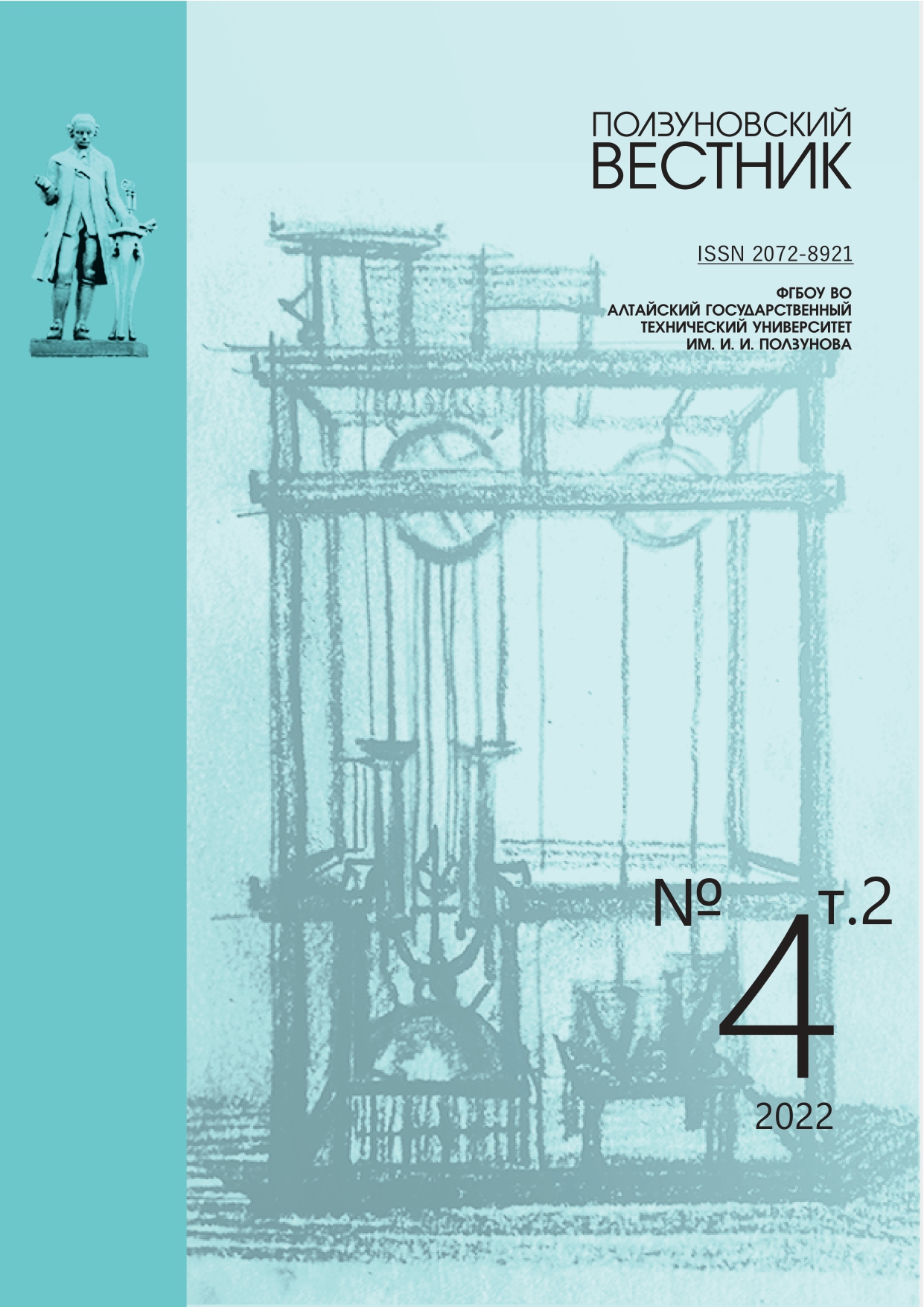EFFECT OF LASER SURFACE MODIFICATION ON PHYSICO-MECHANICAL AND TRIBOLOGICAL PROPERTIES OF STAMPED STEEL
EDN: HAAUYB
DOI:
https://doi.org/10.25712/ASTU.2072-8921.2022.4.2.002Keywords:
stamped steel, laser treatment, surface layer, structure, hardness, wear resistanceAbstract
The effect of laser modification of the surface on the value of the coefficient of elasticity, hardness, coefficient of friction and the amount of wear of the counterbody when testing products made of tool die steel H12MF was investigated. The SVAROG-1-5DR laser complex (Russia) was used for laser processing. When setting different modes of laser processing, the power of laser radiation, the speed of movement of the laser beam relative to the treated surface and the focal length were varied. The measurement of Vickers hardness and wear resistance indicators was carried out using the MicroCombiTester and Tribometer units of the firm CSM Instruments (Switzerland). Rockwell hardness was measured using a TN 301 hardness tester from Time Group (China). The alloy structure was studied by metallography and X-ray diffractometry. It was found that the indicators of hardness and wear resistance of the surface layers of steel H12MF strongly depend on the laser treatment modes. These dependencies are extreme in nature, have maximums and minimums. The paper presents quantitative values of hardness and wear resistance indicators before and after laser treatment of the surface of this steel according to different modes. The reasons for the change in the hardness and wear resistance of the surface layers of steel H12MF after laser treatment according to various modes have been established. The results of the work were used to optimize the modes of laser surface treatment of steel H12MF in order to obtain maximum values of hardness and wear resistance. It has been shown that laser treatment of steel H12MF without melting is promising in terms of increasing hardness and reducing friction. The mode of laser modification of the SVAROG-1-5DR complex was obtained, which allows increasing the hardness by 55.5% while reducing the coefficient of friction by 12.9% and reducing wear by 27.3%.
References
Романовский, В.П.Справочник по холодной штамповке:справочник / В.П.Романовский. –Л.:Машиностроение, 1979. –520 с.
Автоматизированное проектирование штампов :учеб. пособие ; под ред. В.В.Морозова/ А.Г. Схиртладзе[и др.]. – Владимир:Изд-воВлГУ, 2007. –284с.
Grabovskii, V.Y., Kanyuka, V.I. Austenitic Die Steels and Alloys for Hot Deformation of Metals // Metal Science and Heat Treatment.– 2001.–№ 43.– P. 402–405.
Uglov, V.V.Tribological properties of ion-implanted high-chromium steel / [et al] // Surface and Coatings Techno¬logy. ‒ 1994. ‒ Vol. 66. ‒Iss. 1‒3. ‒ P. 283‒287.
Balandin, Y.A. Boronitriding of Die Steels in Fluidized Bed / Y.A. Balandin// Metal Science and Heat Treatment. ‒ 2004. ‒№ 46.‒ P. 385–387.
Deev, V.B. Influence of melting unit type on the properties of middle-carbon cast steel / V.B. Deev// ARPN Journal of Engineering and Applied Sciences.‒ 2018. ‒ Vol. 13. –Iss. 3. – P. 998–1001.
Hu, Z., Wang, K. Comparative Study on Thermal Fatigue Behavior of Two Hot Work Die Steels / Z. Hu, K. Wang // Metallography, Microstructure and Analysis. – 2022. – Vol. 11. –P. 425–433.
Усов, С.В.Промышленное применение физико-технических методов в производстве / С.В. Усов [и др.]. –Москва: Перо, 2021. – 283 с.
Downloads
Published
How to Cite
Issue
Section
License
Copyright (c) 2022 Dmitriy I. Gavrilov, Alexey V. Zhdanov, Igor V. Belyaev

This work is licensed under a Creative Commons Attribution 4.0 International License.















 .
. This work is licensed under a
This work is licensed under a 
